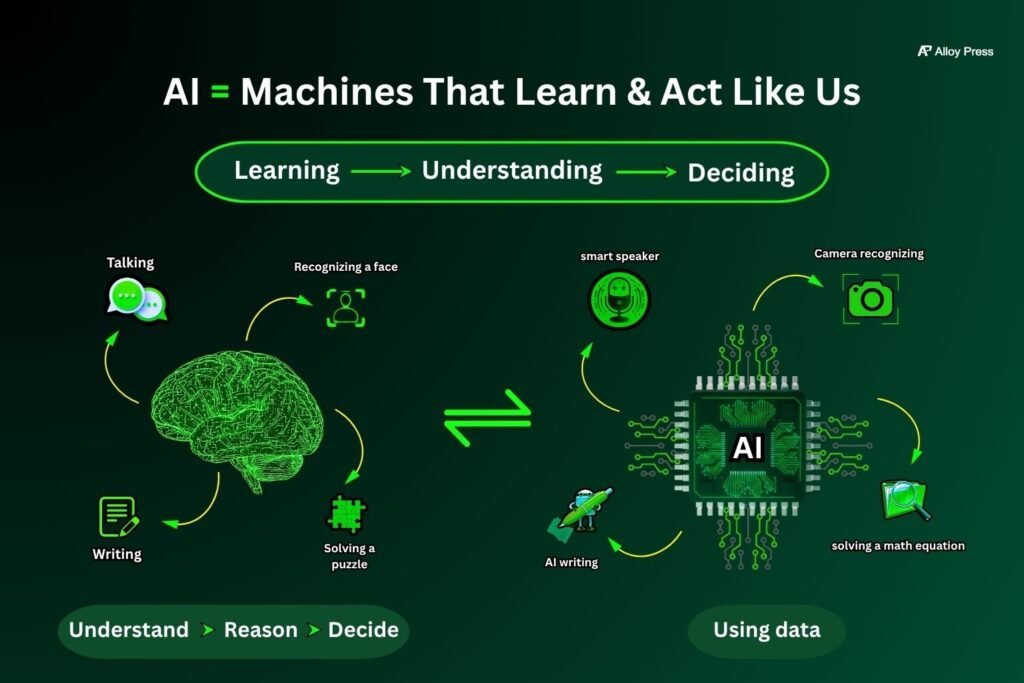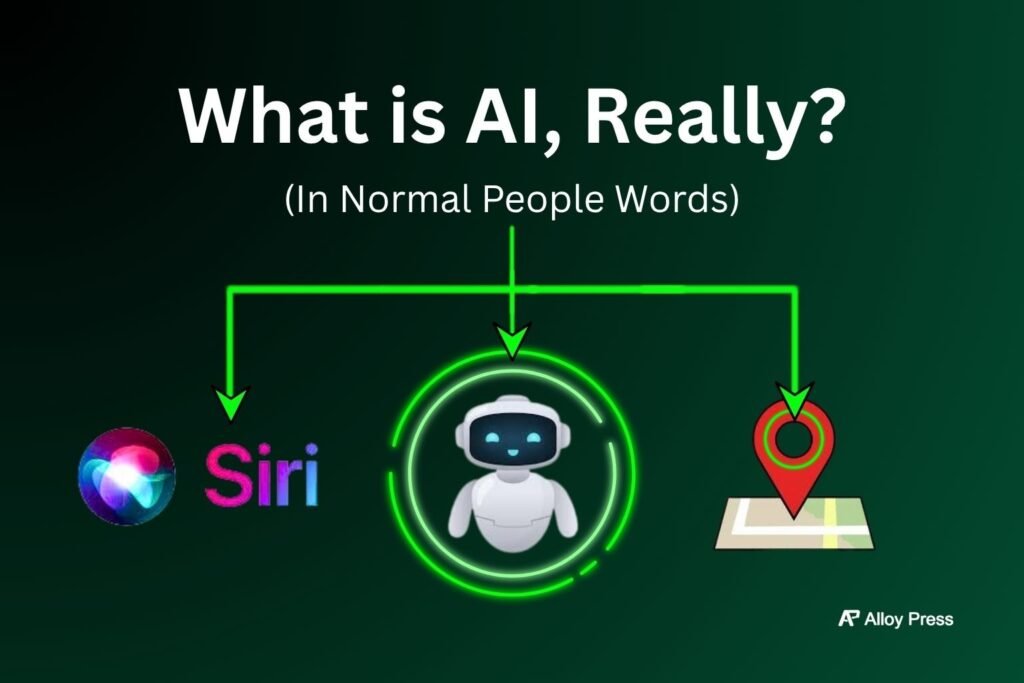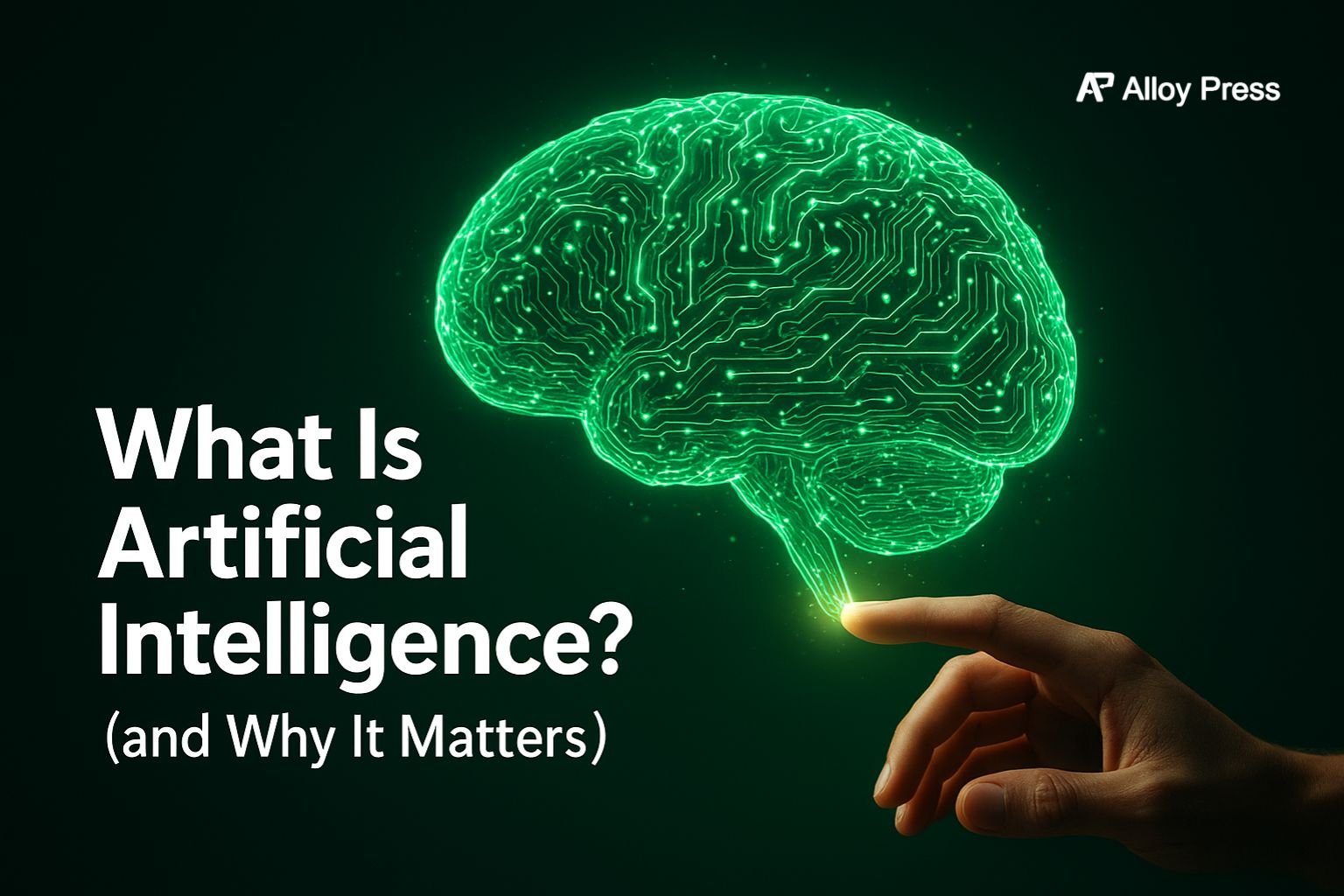AI (Artificial Intelligence) is when machines learn to think and act a bit like humans
they can understand, reason and make decisions using data.
In simple words: AI is when computers learn from experience and do smart things like talk, recognize faces, write or solve problems, without being told every single step.

AI didn’t start with ChatGPT, It’s way older than you think!
Most people hear AI and instantly picture ChatGPT or Gemini, right?
They’re cool, talkative, and everywhere right now.
But guess what?
AI has been around way before your favourite chatbot started spitting out answers.
Let’s take a quick (and fun) trip back in time.
The early days, when AI was just an idea
In the 1950s, a clever guy named Alan Turing asked,
“Can machines think?”
That one question started it all.
Then in 1956, a group of scientists met at Dartmouth College and said,
“Let’s call this thing… Artificial Intelligence.”
Boom… AI officially got its name.
No chatbots, no fancy robots. Just big brains and bigger dreams.
The 60s–80s, smart systems and small steps
People built programs that could play chess, solve puzzles, and even pretend to talk — like ELIZA, one of the first chatbots ever (and no, she wouldn’t pass the Turing Test today).
Then came expert systems basically computers that could “think” like doctors or engineers (sort of).
Cool idea, but they got confused easily like trying to solve life with an Excel sheet.
The 2000s – data, power and serious upgrades
Fast forward: computers got faster, storage got cheaper, and suddenly we had more data than coffee shops in Bengaluru.
That’s when machine learning and deep learning took off.
AI started recognizing faces, voices, even your handwriting. Creepy? Maybe. Useful? Absolutely.
The 2020s – hello, chatbots
Then came ChatGPT, Gemini and all the other talkative AIs.
They didn’t invent AI, they just made it easy (and fun) for everyone to use.
It’s like AI finally got a microphone and said, “Hey world, look what I can do!”
In short: ChatGPT didn’t invent AI, it popularized it.
Why it matters (especially for you)
Knowing this history makes you smarter about how AI really works.
It’s not just magic
it’s decades of research, trial and a lot of “oops, that didn’t work” moments.
The best part?
- AI is booming here, from healthcare to education to startups.
- Tons of free courses and projects are available now.
- You don’t need to be a coder, just curious enough to start learning.

So, What Is AI, Really? (In Normal People Words)
In the simplest terms, Artificial Intelligence (AI) is just a machine’s ability to do things that would normally need a human brain. Think things like:
Learning from examples (like how Netflix learns you love bad reality TV)
Understanding our messy human language (Hey Siri!)
Recognizing patterns (Is that a cat in a photo or just a fuzzy blob?)
Solving problems (What’s the fastest route to work with all this traffic?)
If you think about it, the goal isn’t to build a robot boyfriend. It’s to build tools that can help us, learn and adapt.

The Secret Sauce: How AI Actually “Learns”
You’ve heard the term “Machine Learning,” right? It’s the most important part of modern AI. Here’s the simple analogy I use:
Imagine you’re teaching a kid what a dog is.
You don’t give them a textbook on canine biology. You show them pictures! “This is a dog. This is also a dog. This is a cat, not a dog.”
After seeing enough examples, their brain figures out the pattern.
Machine Learning is the same thing, but for computers. We feed an algorithm a massive amount of data (thousands of dog and cat pictures), and it finds the patterns all by itself. Eventually, it can see a new picture it’s never seen before and say, “Yep, that’s a fluffy dog.”
Why Should You Care? AI in Your Daily Life
This isn’t just about tech giants. AI is quietly making your life easier right now.
| What You Do | How AI Helps |
| Take a photo | Your phone’s AI detects faces and makes the photo sharper. |
| Drive somewhere | Google Maps uses AI to analyze traffic and find the fastest route. |
| Shop online | “Customers who bought this also bought…” is classic AI. |
| Unlock your phone | Facial recognition or fingerprint ID is powered by AI. |
Sounds boring, right? That’s exactly the point. The best AI isn’t a fancy robot, it’s the tool you use without even noticing.
(FAQs You’re Actually Asking)
Is AI dangerous?
AI isn’t dangerous by itself but how we use it matters. It’s like a car: safe when driven carefully, risky when misused.
Will AI replace humans?
AI replaces tasks, not people. It’s best at boring, repetitive jobs — humans are still unbeatable at creativity, emotion, and judgment.
Can I learn AI without coding?
Absolutely! Many tools today need zero programming. Start with concepts — the coding can come later (if you want).
Is AI the same as automation?
Not quite. Automation follows fixed rules. AI learns from patterns and adapts.
Stop Fearing, Start Understanding

AI isn’t magic. It’s math, data and clever programming on a massive scale. It’s a tool and like any tool, from a hammer to the internet, its impact depends on how we use it.
It won’t solve all our problems, but it won’t destroy the world either. The future will probably be a collaboration, you with your brilliant human ideas and AI as your super-efficient assistant.
So, the next time your phone automatically corrects your typo, take a second to appreciate the tiny, helpful spark of artificial intelligence at work.
If you ever feel late to the AI game, you’re not.
You’re just joining at the most exciting part of the story.
And who knows? Maybe your idea is what makes the next big leap.









0 Comments